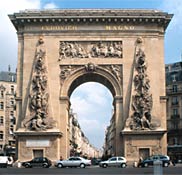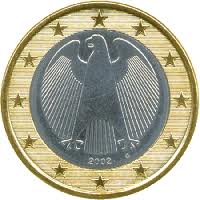Paris

Rue St Denis is one of the oldest streets in Paris with an existence going back maybe a thousand years. The Rue St Denis and the Rue St Martin (nowadays separated by the Boulevard de Sebastapol) formed the two main North-South thoroughfares of the city, both leading to a gate in the city wall at their top end (this was the wall sometimes known as the Charles V wall, built at the end of the 1300s. The Bastille was built as one of its fortifications further east).
The two 'arc de triomphes' at the Porte Saint-Denis Porte and Saint-Martin were commissioned by Louis XIV to commemorate his military victories, on the site of the old city gates just mentioned - around this time the old wall was completely dismantled.
The Saint-Denis arch was erected between 1671-74 by Nicolas François Blondel, and paid for by the City of Paris. A bas-relief on the southern facade represents the passage of the Rhine and the symbolic figures of the vanquished regions of the Rhine and Holland (beneath the features of a grieving woman). On the northern facade, the king is shown placing the town of Maastricht under his yoke. The arch is 27 meters high.
It is often seen mentioned that it was through this gate, and along the rue St-Denis, that the kings of France would return to Paris from religious services at the Basilica of Saint-Denis and that Napoleon's troops also passed through the arch etc etc. This is consistent with what has been said about it previously being a main thoroughfare.
The rue (and adjacent area) was the scene of several 'barricade' actions during the early part of the 19th century.
Allegedly, the arch of the Porte Saint-Denis served as the inspiration for the more famous Arc de Triomphe de l'Etoile (completed in 1836).
The rue Blondel was laid out originally in 1672 by the said François Blondel.
Historical factoid: In 1436, the English, with the support of the Burgundians, had occupied an area of the city around the Porte Saint-Denis. While King Charles VII was approaching Paris, its citizens began to revolt against the English. Directed by Michel de Lailler and aided by the High Constables Richemont and Jean de Villiers d'Adam, a plan of attack was devised. Richemont, who was based in Saint Denis (outside the city), decided to enter Paris through the Porte Saint-Martin, while the English were expecting him at the Porte Saint-Denis. The English were soundly defeated, allowing King Charles VII to triumphantly enter the city on November 12, 1437.

